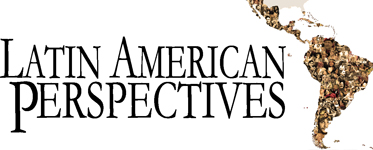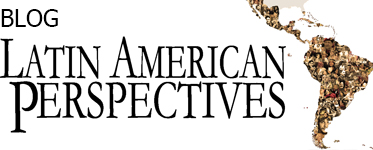LAP Blog Exclusive
“To reach the unreachable star. This is my quest, To follow that star No matter how hopeless, No matter how far.”
Don Quixote’s elusive quest is a fitting metaphor for Puerto Rico’s statehood movement. For over 120 years Puerto Rican annexationists have campaigned to convert the archipelago into a state of the Union. In 1899, one year after Spain was forced to cede Puerto Rico to the United States, the island’s Republican Party and the Federal Party called for the archipelago’s “definitive and sincere annexation.” Consistent with their understanding of U.S. territorial policy, the annexationists expected that Puerto Rico would automatically become an incorporated organized territory, and eventually be granted statehood. This clearly did not happen. The Supreme Court ruled in 1901 (Bidwell v Downes) that since Puerto Rico was “inhabited by alien races differing from us in religion, customs, laws, methods of taxation, and modes of thought” it would be barred from admission into the Union until that time when “our own theories may be carried out and the blessings of free government under the Constitution extended to them.” Puerto Rico long ago acquired these attributes, which are central to the creed of American exceptionalism, but it still languishes as the American empire’s last remaining colony.
Since 1967, when the pro-statehood Partido Nuevo Progresista (PNP) first gained control of the insular government, it has leveraged public resources and political contributions in an ongoing campaign to recruit U.S. legislators and the American public to its cause. The PNP has held five plebiscites since 1993. It appointed two shadow congressional delegations modelled on the Tennessee Plan to lobby Congress for statehood. The PNP Resident Commissioner and statehood supporters in Congress regularly introduce legislation calling for Puerto Rico’s admission to the Union. In March 2021 Jennifer González, Puerto Rico’s Resident Commissioner, and Florida Democrat Darren Soto introduced the Puerto Rico Statehood Admissions Act, H.R. 1522. In the same month Democratic Representatives Alexandria Ocasio Cortes and Nydia Velasquez of New York presented the Puerto Rico Self-Determination Act of 2021, H.R. 2070, which includes statehood as a territorial option Between 1898 and 2021 Congress introduced over 140 territorial status bills. Over the years a multitude of congressional commissions has descended on the archipelago to assess public sentiment for status change. Congress has held dozens of hearings on Puerto Rico’s territorial status. Most recently, the House Committee on Natural Resources held hearings on April 14, 2021, and convened a second set of hearings on June 16, 2021, on status related legislation that includes statehood as possible decolonizing. It is surprising this was the first time Congress held hearings on a statehood admission bill. The PNP employs high power lobbying agencies and law firms to influence Congressional committees of jurisdiction over Puerto Rico. Former PNP officials established the Puerto Rico Statehood Council and the Puerto Rico Equality Forum to lobby Congress. Former PNP officials set up PR51st. which is described as a public advocacy and educational organization
Despite all this activity, today the PNP is no closer to adding another star to the American flag than its annexationist progenitors were in 1898. Yet, the PNP resolutely ignores the political headwinds that have stymied the statehood movement, and marches on. Recently the PNP has intensified its campaign to convince Congress to admit Puerto Rico into the Union. This urgency is driven by dramatic political developments that have unnerved the PNP leadership. A popular uprising in 2019 forced PNP governor Ricardo Rosselló to resign. Scandals involving PNP officials and mishandling of crises caused by Hurricane María in 2017 and the earthquakes in 2019 undermined the party’s credibility. The PNP lost control of the legislature in 2020. The PNP’s base is eroding, as new progressive political parties are gaining more support.
Why does the PNP persist in its statehood campaign when faced with long-standing, seemingly insurmountable Congressional opposition? The short answer is that the PNP has no choice but to sustain the illusion that statehood is a historical inevitability. The PNP has mounted a permanent campaign to gain and hold onto political power by convincing Puerto Ricans that statehood is inevitable. The political party that controls the governorship commands the abundant resources of the colonial state and manages billions of dollars of federal transfer payments and emergency funding.
The PNP has no program for governing. Its growth strategy “aims to ensure Puerto Rico’s economic and fiscal transformation” by enhancing profitability for U.S. corporations. It has no discernable ideology that is intrinsic to Puerto Rico’ reality. However, much of its leadership is politically conservative along the lines of the Trump wing of the Republican party, and it is also fiercely and violently anti-independence. The PNP campaigns on the theory that it is only a matter of time before Congress gives in to its demand for statehood. The PNP reasons that Congress cannot permanently evade the moral obligation to grant Puerto Rico the political equality and civil rights which can only be conferred by admission into the Union.
The PNP held plebiscites in 2012, 2017, and 2020. All were mired in controversy and marked by a steady drop in voter turnout. Efraín Vásquez-Vera, a university professor and former assistant secretary of state under the opposition Popular Democrático Party, ridiculed these plebiscites as having been “designed and pushed forward without consensus by the almost fanatical pro-statehood political party while in power, with the evident propose … of maintaining alive the chimera of statehood.” This partisan commentator is not alone in rebuking the credibility of the PNP orchestrated plebiscites. The Department of Justice also “disputed the validity of the plebiscites” in a recent report on H.R.1552.
The Department of Justice has previously stated that the ballot propositions in the 2012 and 2017 plebiscites contained inaccuracies and were potentially misleading and that the premise of the 2020 plebiscite—that the people of Puerto Rico had conclusively rejected the current territorial status in 2012 and 2017—was one with which the Department disagreed.
The 2012 plebiscite had two important takeaways. First, 54 percent of Puerto Rico’s 1.9 million voters disapproved of the Commonwealth status. Second, the PNP did not get the mandate for statehood it wanted. The state electoral commission certified that 61percent of the 1,364,000 cast were for statehood. But the results excluded 498,604 (24percent) blank ballots that were cast. The opposition political parties argued that by not counting the blank ballots, which they claimed were protest votes, the plebiscite results failed to accurately measure the level of statehood support. It is ironic that while voters rejected the Commonwealth, they also voted Luis Fortuño and the PNP out of office. The PPD governor Alejandro Garcia Padilla signed a concurrent resolution in May 2013 declaring that the 2012 plebiscite results were “inconclusive.” According to Garcia Padilla, the statehood dropped to 44.4 percent if the “protest” blank ballots were counted.



